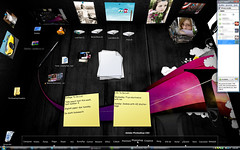"But with all programming/design problems – there are a multitude of unique methods that may be employed to removed the dermal layer of the felinus domesticus"If you don't know how to setup a "right click" menu item for files and folders I would recommend checking out the following posts: Windows Selected Filenames, Command Prompt
Lets get on with it, This "version" of the selected filenames
 will use the same steps to get it up and running, (right click menu), but the only difference is that now when we have our script setup we'll copy the files to the clipboard, then deslect the files and right click on a single filename and select your copy filenames script, Lets get into the meat of this script,
will use the same steps to get it up and running, (right click menu), but the only difference is that now when we have our script setup we'll copy the files to the clipboard, then deslect the files and right click on a single filename and select your copy filenames script, Lets get into the meat of this script,#! perlBreaking it down again:
use WIN32::CLIPBOARD;
$text = "";
$CLIP = Win32::Clipboard();
if ($CLIP->IsFiles())
{
@files = $CLIP->GetFiles();
foreach $file (@files)
{
@sp = split(/\\/, $file);
$text = $text .$sp[@sp-1] . "\n";
}
$CLIP->Set($text);
}
First we declare:
use WIN32::CLIPBOARD;
This is so we can use Windows Clipboard functions
Next is
$text = "";
We want a clean text string.
Then,
$CLIP = Win32::Clipboard();
Here we setup the $clip as a clipboard object.
Next,
if ($CLIP->IsFiles())
What this is doing is checking that there are "files" in the clipboard, we want this because otherwise we'll try to write "nothing" to the clipboard and I'm sure that's not a problem, but if for some reason you really didn't mean to do this and you already had text in the clipboard then it won't overwrite your text clipboard contents, either way it won't write to the clipboard if you don't have any files in the clipboard, you can remove this if you want but I haven't tested it out, it may work just fine.
Then,
@files = $CLIP->GetFiles();
This chunk of code goes out and gets the files in the clipboard, and stores them in an array.
Next,
foreach $file (@files)
So what we're going to do is run the next couple of lines for each file (or in this case we'll be grabbing the filename)
Then,
@sp = split(/\\/, $file);
This line splits the "filename" up into segments if you were interested in the whole pathname you could omit this step and just assign the $text variable to whatever $text contained and the $file variable plus "\n", so you get each filename on a new line.
Next,
$text = $text .$sp[@sp-1] . "\n";
This takes the split up line above and grabs the last bit of it, which happens to be the actual filename. Remember if you wanted the entire pathname you could use the $file variable like so,
$text = $text . $file . "\n";
Finally,
$CLIP->Set($text);
This line sets your newly created text to the clipboard!
Give it a try and let me know how it works out for you!
I'm sure this isn't the last post about this subject, as always things are always improving, I am constantly thinking of a way to cut back on the amount of steps to run this little "tool" my plan is to eventually "simulate" the keystroke to "copy" the files then copy the filenames, not sure how to go about it, without running multiple instances, I'm sure hotkeys will be a big help on this, either way I'll be improving this script again in the future...Stay tuned I'm certain there will be more posts on getting this working better.